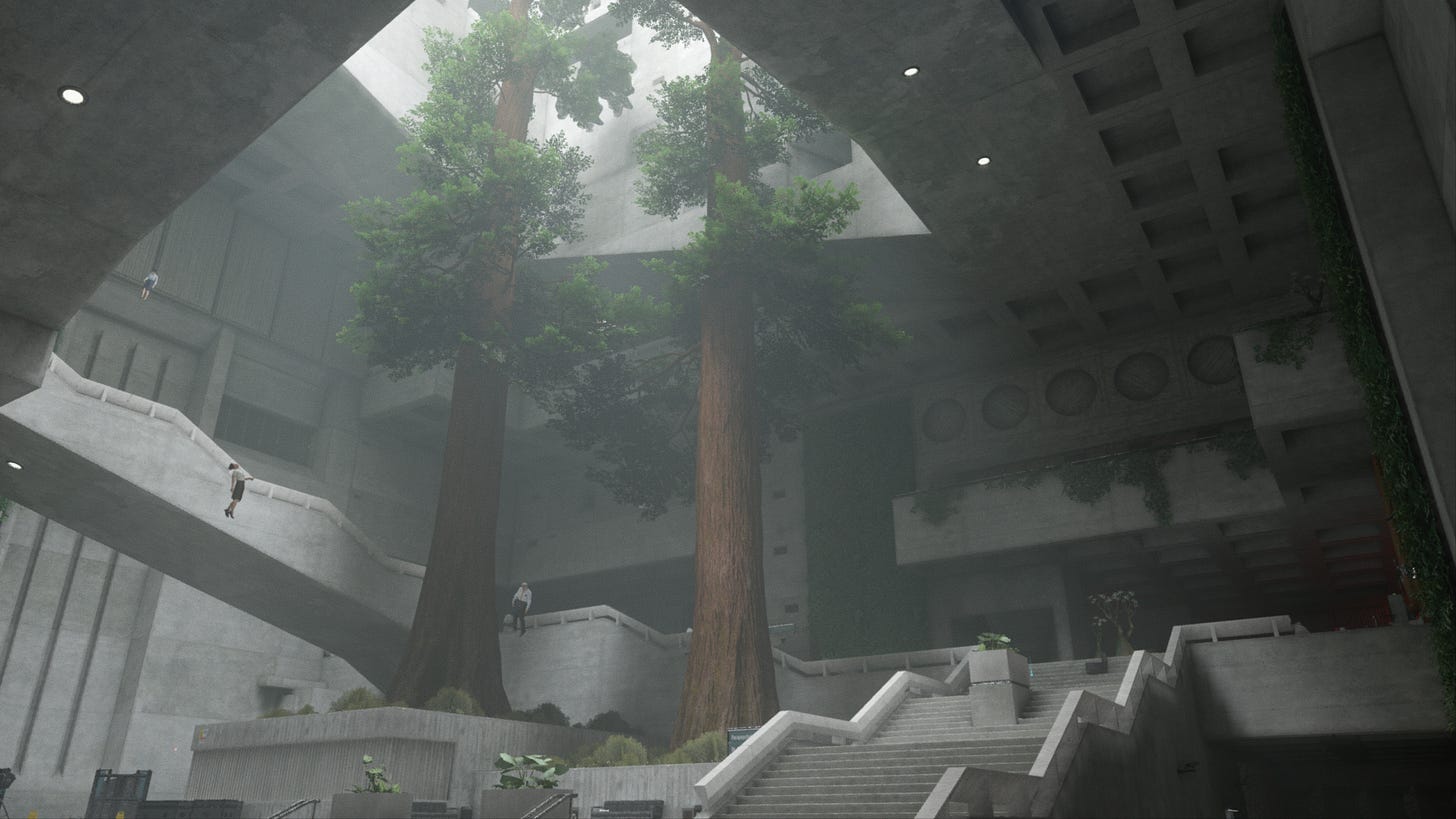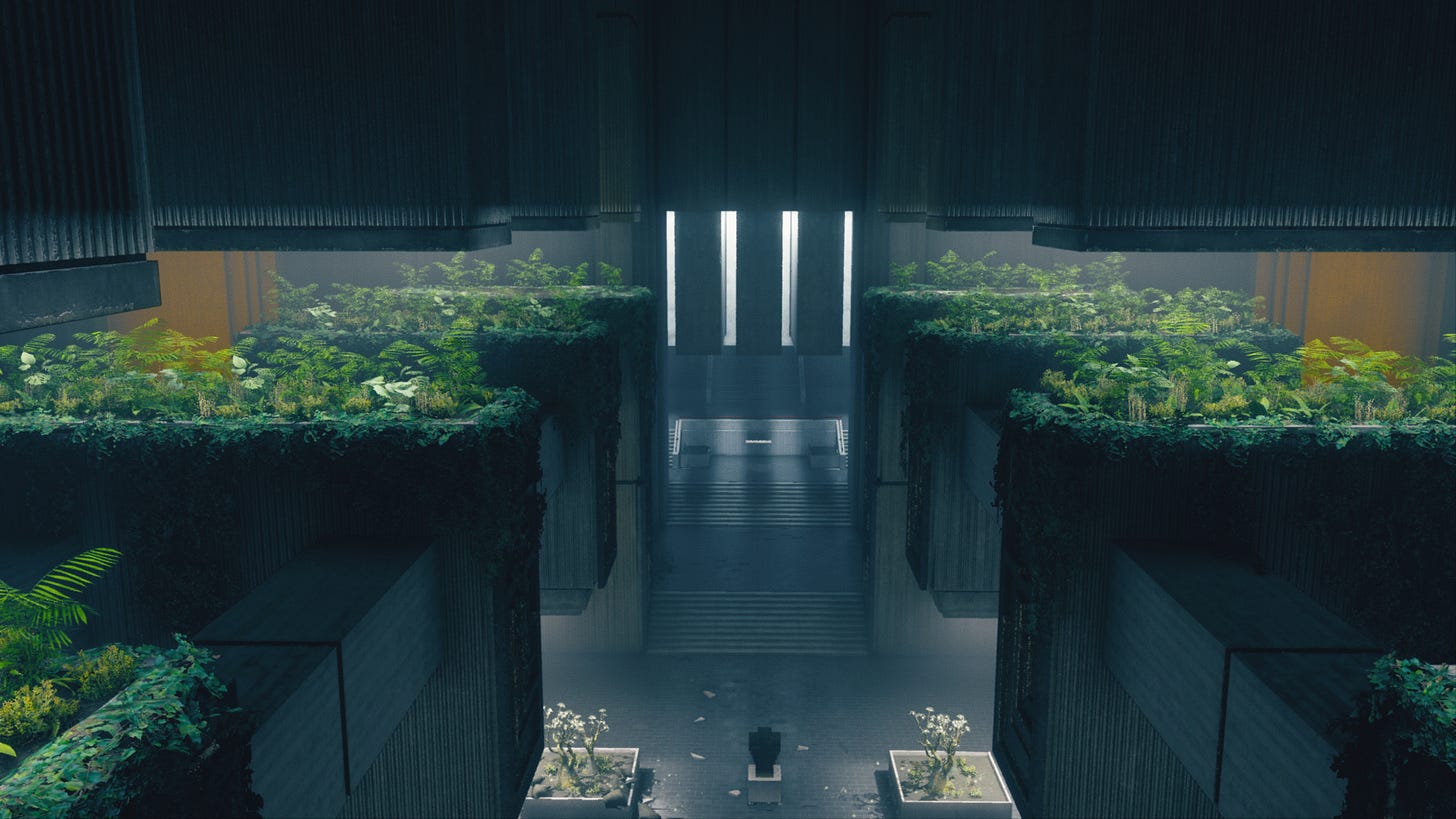The fantastic Brutalism of Control
Concrete, astral planes and paranatural entities. Typical day at the office!
Remedy's 2019 hit Control is set in a brutalist office building.
Now when I say it like that, it isn't the most interesting setting for a video game.
The Oldest House is the primary setting for the game. It serves as headquarters for the fictional Federal Bureau of Control and can only be found by those looking for it. It is a place with a mysterious history, a mysterious present and an even more mysterious future.
As someone with a soft spot for brutalist architecture, I was hooked on the game the second I saw its announcement. Brutalism works incredibly well in video games, from the Animus Blackroom in Assassin's Creed Revelations and the reoccurring Isu ruins throughout the series to the level design of NaissanceE.
Brutalaim works for Control and other games that use the style by tapping into the player's preestablished bias regarding the style. While the style has roots in utopian ideals and reconstruction efforts, it has fallen in and out of favour over the years. Due to its portrayal in popular culture, Brutalism has become a visual calling card for totalitarianism and dystopia. Control uses this to its benefit in order to create a visual language when it comes to its environment.
When players enter The Oldest House, they immediately have a predetermined idea of what the space is. This is an office building, a government bureau with an oppressive-sounding name that is holed up in a windowless office building of bureaucracy. By welcoming the player in through an unassuming lobby and then guiding them through a series of meandering hallways, it aligns with the player's ideas of what an office building is.
Piece by piece, the ideas are slowly challenged as the mundane space gives way to the metaphysical space with impossible atriums and alternate dimensions. By using Brutalism as its core style, Control can easily subvert the player's expectations about what the style means in this context.
As an individual with paranatural abilities, Jesse Faden leaves a path of destruction in her wake as she battles her way through the hordes of Hiss that have invaded the oldest House. The heavy use of concrete means that each combat encounter turns into an abstract artwork. Chunks of concrete can be ripped from the walls and floor, launched at enemies, and the building itself. Bullets scar the concrete and if there is any glass object in the vicinity, I can guarantee they will be shattered by the time the fight is done. This reactivity is what makes the Brutalism in Control unique.
In most games, the aftermath of a fight is fallen enemies and scattered loot, but in Control, the aftermath tells the story of the combat encounter. Once smooth walls are now cracked and scarred by bullets, a cloud of fine dust hangs in the air, and debris litters the once pristine environment. The Oldest House heals itself after its damaged. Though this is likely just the game engine ticking over and regenerating the environment ready for the next combat encounter, it gives the illusion that the building is a living organism. It can feel and react to situations. The shifting walls and hostile hallways function as an organism that is protecting itself. Using such a blank material such as concrete allows the players to see the effect they have on the world and, in turn, makes for environments that are engaging visually and thematically.
A marquee feature of Brutalism is its scale. Large slabs of concrete give way to tall ceilings and large atriums. The inspiration for The Oldest House comes from the building located at 33 Thomas Street in New York City. The building is a 170m tall building with no windows; it is a mammoth building that sticks out amongst the sleek skyline. Within Control, that sense of scale is present throughout the game.
From lobbies to astral planes, the architecture of Control makes you feel small. The scale contributes to the feeling of being out of your depth. Jesse has been thrust into the role of Director of the FBC. Unprepared and treading water the best she can to stay afloat, the sense of overwhelming scale mirrors Jesse's feeling as she navigates through these vast spaces. The use of the inhuman scale of Brutalism emphasises the otherworldly nature of the Oldest House and gives a sense of being swallowed whole by the House.
Light is integral to the setting and story of Control. The main enemy—the hiss—is drenched in red light, as are the sectors of the oldest House that are infected by the hostile forces. Despite being one whole, each sector of The Oldest House is distinct in its appearance. The light turns bland walls into artwork as the light bounces and refracts off the myriad of surfaces. A great example of how light plays with the brutalist environment is the Ritual Division.
When you first enter this space, it's bathed in red light and overwhelmed by Hiss. Jesse fights through the hoards and cleanses the control point, forcing back protruding chunks of concrete to give way to pristine concrete and beams of light that highlight lush foliage. By using Brutalism, the elements of light and colour are brought to the forefront of the design of the world. No matter the element, be it light, nature, mold and destruction, the use of Brutalism elevates these elements and allows them to work both individually and as part of a larger whole.
Though the setting of a brutalist office building doesn't seem like an engaging setting, Control takes the preestablished rules and aesthetics of Brutalism and develops them for the multidimensional world and story of The Oldest House. Using the style to challenge people's bias about the style, Remedy reinvents a classic style. The use of Brutalism in Control creates a beautiful and reactive environment for players while allowing the elements of Brutalism to stand on their own and as a whole.









